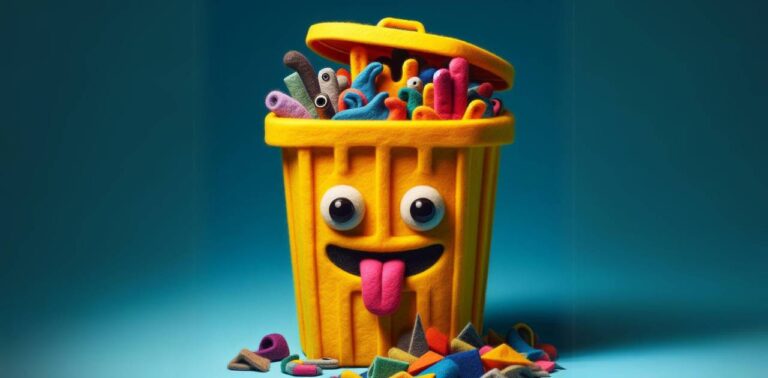Advertisements
Recycling is an increasingly relevant topic in our society, especially when we talk about products that, at first glance, seem difficult to recycle, such as aerosols. Many people believe that aerosol cans are not recyclable, but in reality, this is a myth that we need to dispel. In this post, we will explore how aerosol recycling can be a practical practice. sustainable, and how it contributes to the preservation of the environment. In addition, we will highlight the importance of opting for sustainable products in our daily lives.

What Are Aerosols and How Do They Work?
Aerosols are pressurized containers that store a wide variety of products, from personal and household items to industrial solutions. They are widely used for their practicality and efficiency in dispensing contents in a controlled manner. However, many people still have questions about their composition and the possibility of recycling.
After the implementation of the Montreal Protocol, the aerosols stopped using CFCs (chlorofluorocarbons) as propellant gas, adopting safer alternatives such as hydrocarbons, air and nitrogen. This not only reduced the environmental impact, but also made it possible to recycling of these products, as long as it is carried out correctly and safely.
Myths and Truths about Aerosol Recycling
There is a stigma around recycling aerosols, mainly due to persistent myths. Many believe that these packages cannot be recycled, or that they still use CFCs that are harmful to the ozone layer. Let's clarify these points:
- Myth 1: Aerosols contain CFCs and are harmful to the environment.
- True: Since the 1980s, CFCs have been phased out of aerosols. Today, these products use safer propellant gases, such as hydrocarbons and nitrogen, which do not affect the ozone layer.
- Myth 2: Aerosols cannot be recycled.
- True: Aerosols can and should be recycled. However, it is essential that they are completely emptied before being disposed of for recycling.
A recycling of aerosols is a practice sustainable which helps to reduce the volume of waste in landfills and preserve natural resources, promoting the reuse of the materials from which they are made.
How to Recycle Aerosols Correctly
Recycling aerosols can seem complicated, but with the right information, the process can be simple and safe. Here are a few steps to help you make sure you’re doing your part:
- Empty the Packaging: Make sure the aerosol is completely empty before disposing of it. This is crucial to avoid any risk of explosion during the disposal process. recycling.
- Do Not Puncture or Deform the Can: Puncturing or crushing the aerosol can may release gases still present, creating a fire hazard. Keep the packaging intact.
- Remove Plastic Parts: If possible, remove the plastic parts, such as the cover and actuator, and separate them from the metal. This makes the assembly process easier. recycling.
- Dispose of in the Proper Place: Check if your city has selective collection and dispose of the aerosol together with other recyclable materials.
By following these guidelines, you contribute to the recycling safe from aerosols and supports practices sustainable in your community.
The Importance of Sustainable Products in Everyday Life
Opt for sustainable products is an effective way to reduce environmental impact and promote sustainability. Aerosols are just one example of how everyday products can be recycled and transformed into new items, closing the life cycle of materials.
Sustainable products are those developed with minimal environmental impact, from production to disposal. They are made with recycled, reusable or biodegradable materials, and use manufacturing processes that consume fewer natural resources and energy.
In addition to aerosols, we can adopt other practices sustainable in our daily lives, such as:
- Choose recyclable packaging: Whenever possible, choose products whose packaging can be recycled. This helps reduce the amount of waste that ends up in landfills.
- Avoid single-use products: Disposable products, such as straws and plastic cups, generate a large amount of waste. Choose reusable and durable items.
- Support conscious brands: Many companies are adopting practices sustainable in their operations. By choosing these brands, you encourage the industry to continue investing in sustainable products.
Modern Equipment for Aerosol Recycling
In the market, there are advanced technologies that facilitate recycling of aerosols, making the process safer and more efficient. One example is the use of unitary systems that pierce the cans and capture the volatile compounds (VOCs), releasing the gases into the atmosphere in a controlled manner.
Other equipment, such as automatic compactors, empty and press the cans, separating the materials and ensuring that all the contents are properly processed. These machines can process up to 250 cans per hour, demonstrating that recycling of aerosols is not only possible, but can also be done on a large scale.
Investment in technologies recycling is fundamental for the advancement of sustainability in our society. The more efficient the process, the greater the adoption by the population and industries.

Aerosol Recycling and the Sustainable Future
A recycling aerosols is a practice that needs to be encouraged and widely adopted. With the right information and the use of appropriate technologies, we can transform these products into valuable resources, contributing to a more sustainable future. sustainable.
When choosing sustainable products and support the recycling, you not only reduce your environmental impact, but you also participate in a global movement for the environment. Remember that every little action counts and that together we can make a big difference.
A recycling of aerosols is a clear example of how practices sustainable can be applied in our daily lives, ensuring a healthier planet for future generations. Do your part and inspire others to follow the same path!
Check out other interesting facts about recycling clicking here.
Learn how to make art by recycling, Click here.



